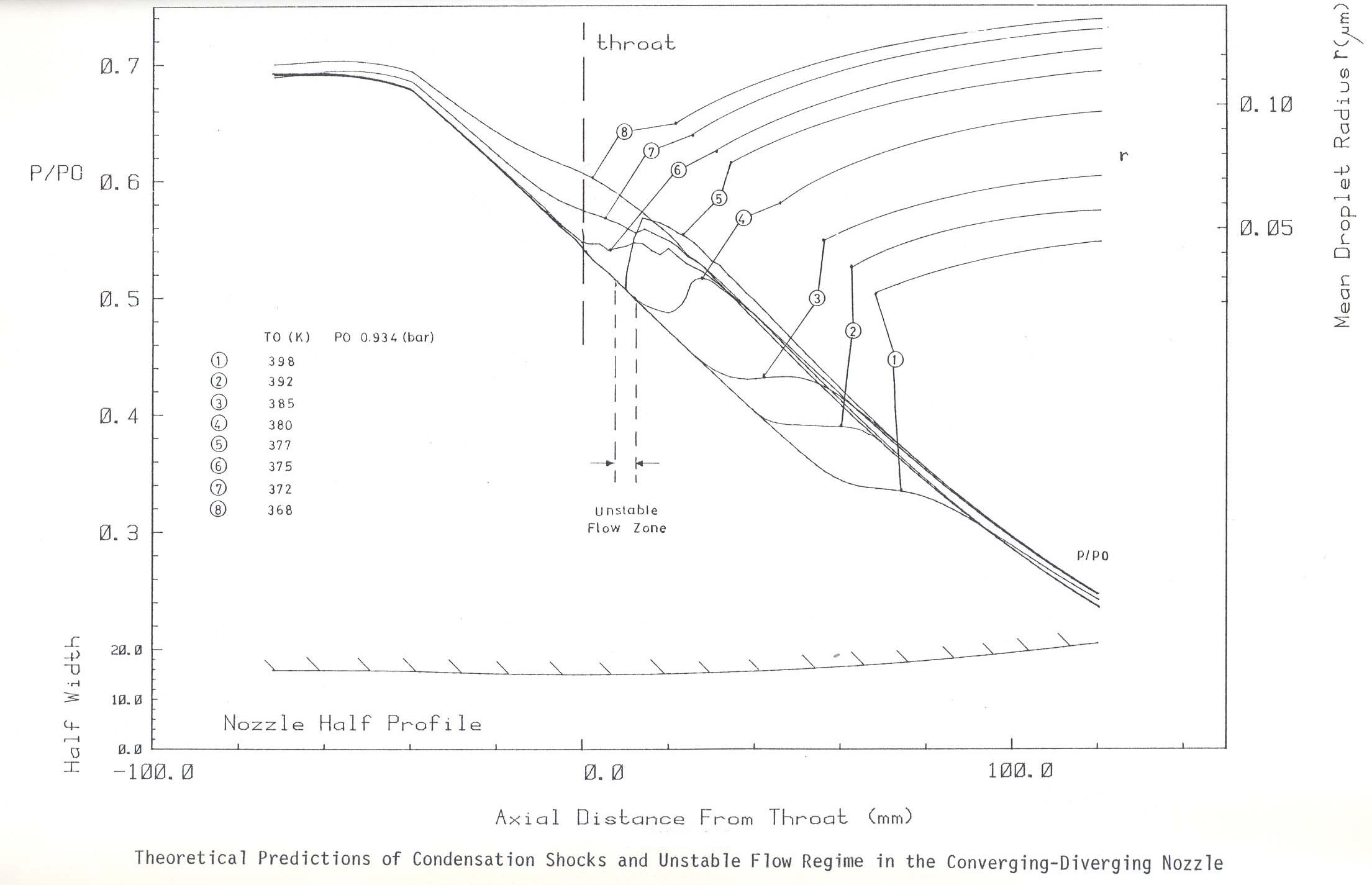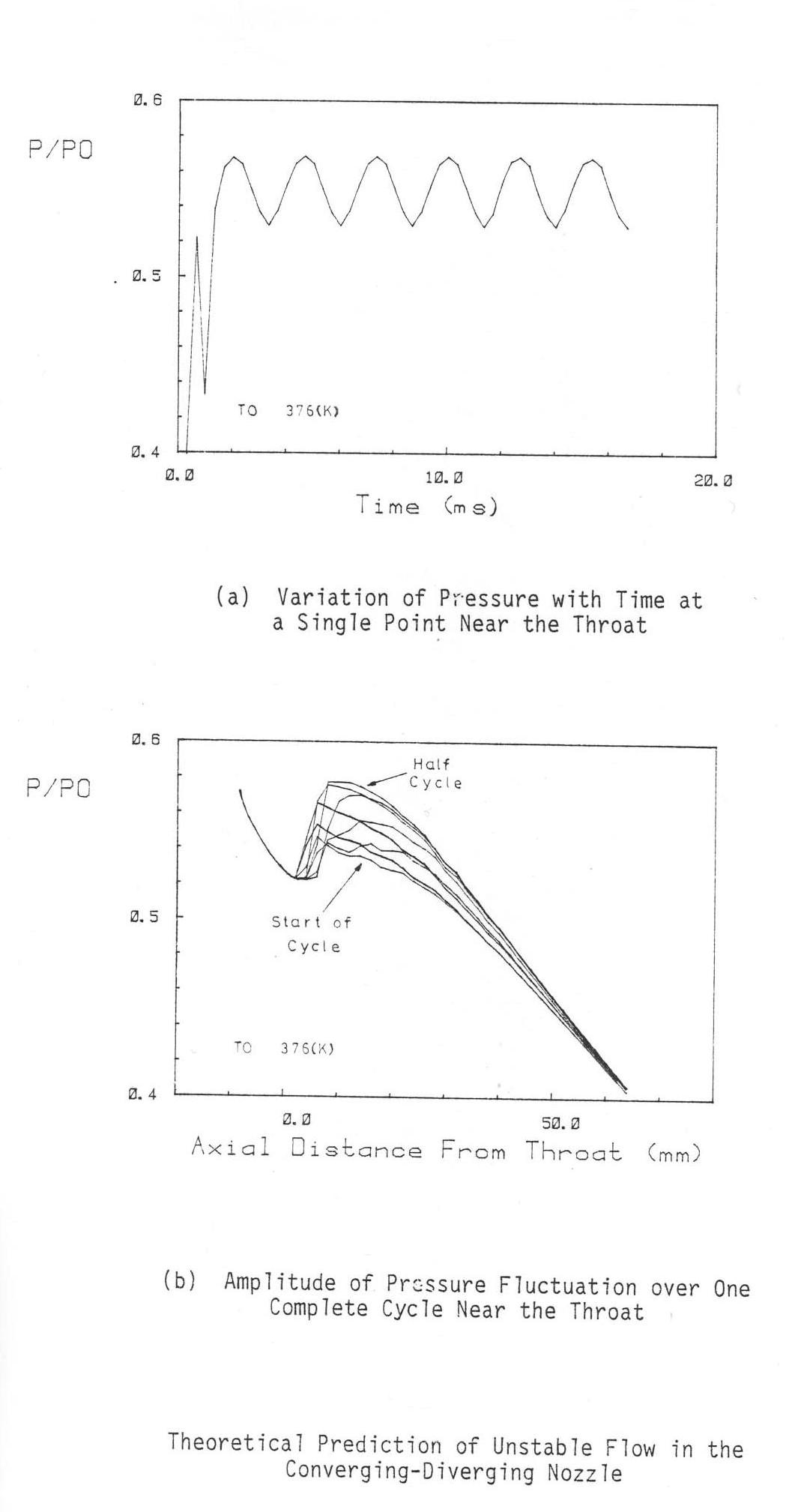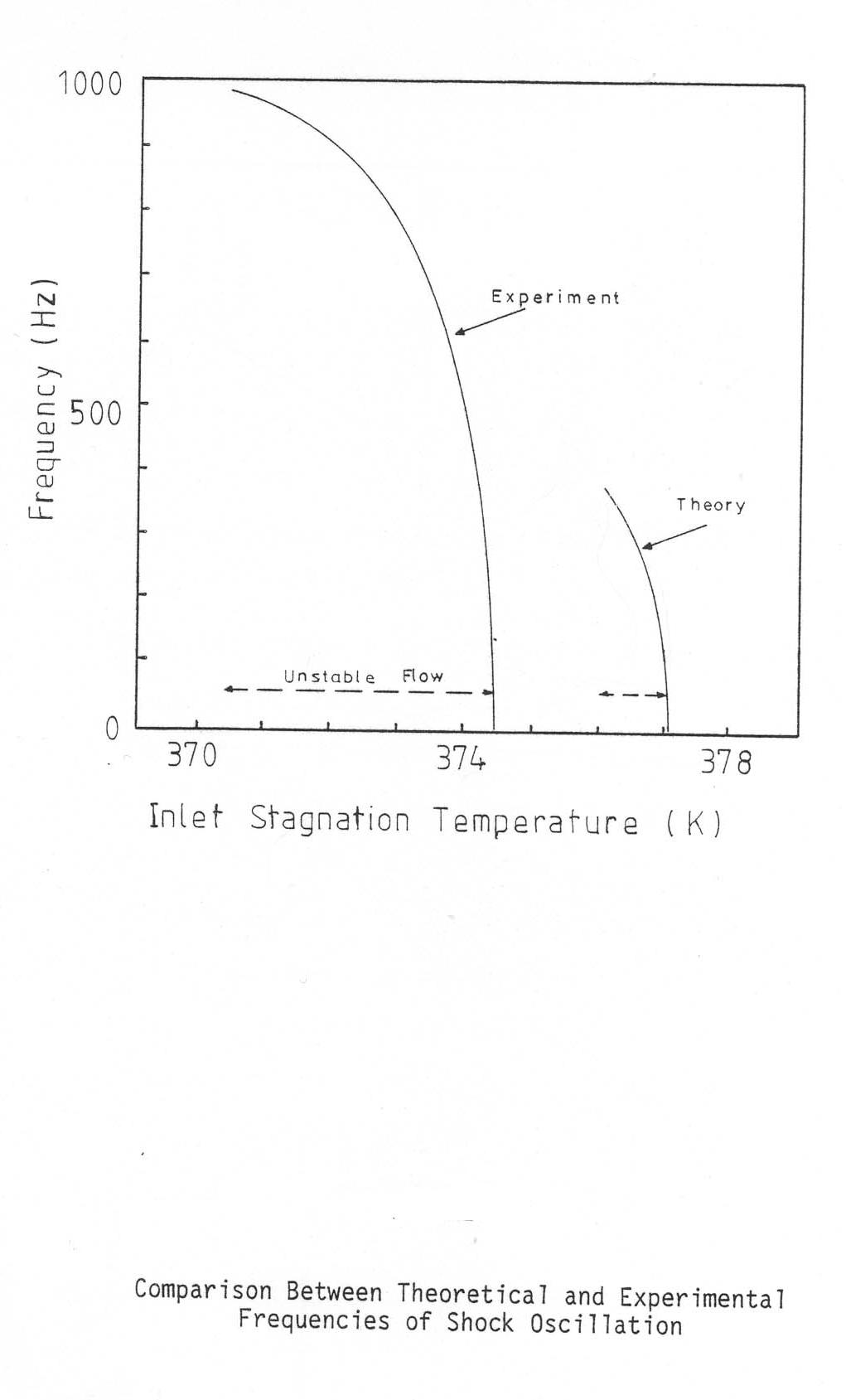
Supercritical Heat Addition Phenomenon in Steam Flows
One of the interesting phenomenon associated with flows in supersonic nozzles is that of instability caused by supercritical heat addition.
This instability pattern can be triggered in transonic flows by a small release of heat due to condensation, combustion or electrical heating. In condensing flows, instability can be caused when nearly saturated steam expands through a converging diverging nozzle. at certain inlet temperature the heat generated due to condensing steam is such that no continuous solution of the gas-dynamic equations is possible , although a steady state condition can arise by the creation of a Rankine-Hugoniot type adiabatic shock. In this situation the flow accelerates to the throat of the nozzle, recompresses through the shock and then accelerates again to supersonic Mach numbers in the remaining downstream section. If inlet temperature is reduced further , a point can be reached where no steady solution is possible, a small adiabatic shock moves upstream against the flow while a new shock forms downstream. This process results in an unsteady, pulsating flow pattern and is known as the supercritical condition. Oscillating flows due to supercritical heat addition have been measured by researchers. However, Dr. Meron Lavy (Mehran Moheban) was the first to develop a CFD computer program to simulate the phenomenon in steam nozzle flows. What Abhijit Guha (A.Guha) , currently at Bristol University, claims to have developed a simulation program for instability in supercritical steam flows has no grounds. A. Guha's work is not original as it is based upon and replicates, to some extent, Dr. Lavy's (Moheban's) PhD research work that went into print almost six years before Guha's thesis publication! Furthermore, A Guha's PhD dissertation breaches all the copyright and intellectual property laws not only in replicating Dr. Lavy's original PhD work but also by not acknowledging it as its source of reference. This research project was first initiated by Dr. Meron Lavy-Moheban whilst at the Whittle Laboratory, Cambridge, in the early 1980's. The code was based on the finite-volume methodology of Prof. J.D. Denton. The time-marching program adopted was for inviscid flows but solves for the Eulerian flow equations to first order accuracy incorporating unsteady non equilibrium steam parameters. The solution is quasi-unsteady and is for mono-dispersed vapour droplet flow.The full research work and the computaional methodology can be reviewed in the PhD thesis by Dr. Meron Lavy-Moheban as cited in the reference link supercritical unsteady steam flow PhD thesis. A copy of the research work can also be obtained by contacting Dr. Lavy via the email link below.
As an example of the versatility of the program, below are presented the results for pressure and droplet size distributions for a number of inlet stagnation temperatures in a test nozzle. In the second figure the computed variation of pressure with time for a single point in the region where the maximum amplitude of pressure is detected is shown. The solution becomes periodic after a few hundred iterations. The next figure shows how the flow is influenced by the instability pattern during a cycle over an appreciable distance downstream of the throat of the nozzle. The pulsating flow near the throat gives rise to a peak to peak pressure amplitude of about 0.04 bar which is remarkably close to the value measured in the experimental data supplied for the same nozzle shape and operating conditions.
The next figure shows comparisons between the numerically calculated and empirical values of frequencies of shock oscillation in the region where unstable flow occurs. The theory predicts the instability region to occur in the range of inlet temperatures with the frequencies closely matched by the supplied experimental data.
Dr. Lavy's interests are also in 2D and 3D blade-to-blade non-equilibrium steam flow simulation and through-flow calculation methods for single and multi-droplets, 2D and 3D CFD for radial flow turbochargers and experimental fluid dynamics.
The references for this research and complete research work please see
references
or contact or info(at)technoenterprises.com



Besides CFD flow analyses which is his prime area of research and interest
he is a Director of Sanicle Ltd.
It is important to note that in the fast pace and intolerant society that we presently live, due
to misconception and sometimes
self-interest and for convenience,
people disregard the merits of the disabled whatever its nature may be.
But,
evidently, given the opportunity and the right environment to harness
their skills and knowledge without prejudice, the disabled can perform the tasks with
the same dedication, diligence and accuracy as the non-disabled if not
even better. The employers are, for example, seeing the benefits of hiring gradutaes with autism because they have a unique talent for information technology, attention for detail and seeing patterns. Infact more and more employees are recognising the benifits of having a diverse workforce. There should be no discrimination in an educational establishment, with no double standards.The Disability and Equality Acts (for example in the UK see : UK Equality Act 2010 and the Disability Resource Centre)
have made progress in removing the physical barriers but we still have some way to go in removing
the more difficult and damaging attitudinal barriers. The aim of the Company is to develop and produce various
innovative patented electro-mechanical devices to enhance the quality of
every day life with particular emphasis on environmental issues. The projects
pursued so far range from a miniature intraoral prosthesis to assist the
laryngectomee patients with comprehensible speech; a flexible multi-moduled
ramp for wheelchair users; to a unique sanitary door handle that minimizes
cross contamination in high traffic public areas - a breeding ground for
bacterial and contagious diseases. For more information please see patents.
© Techno Enterprises 2005